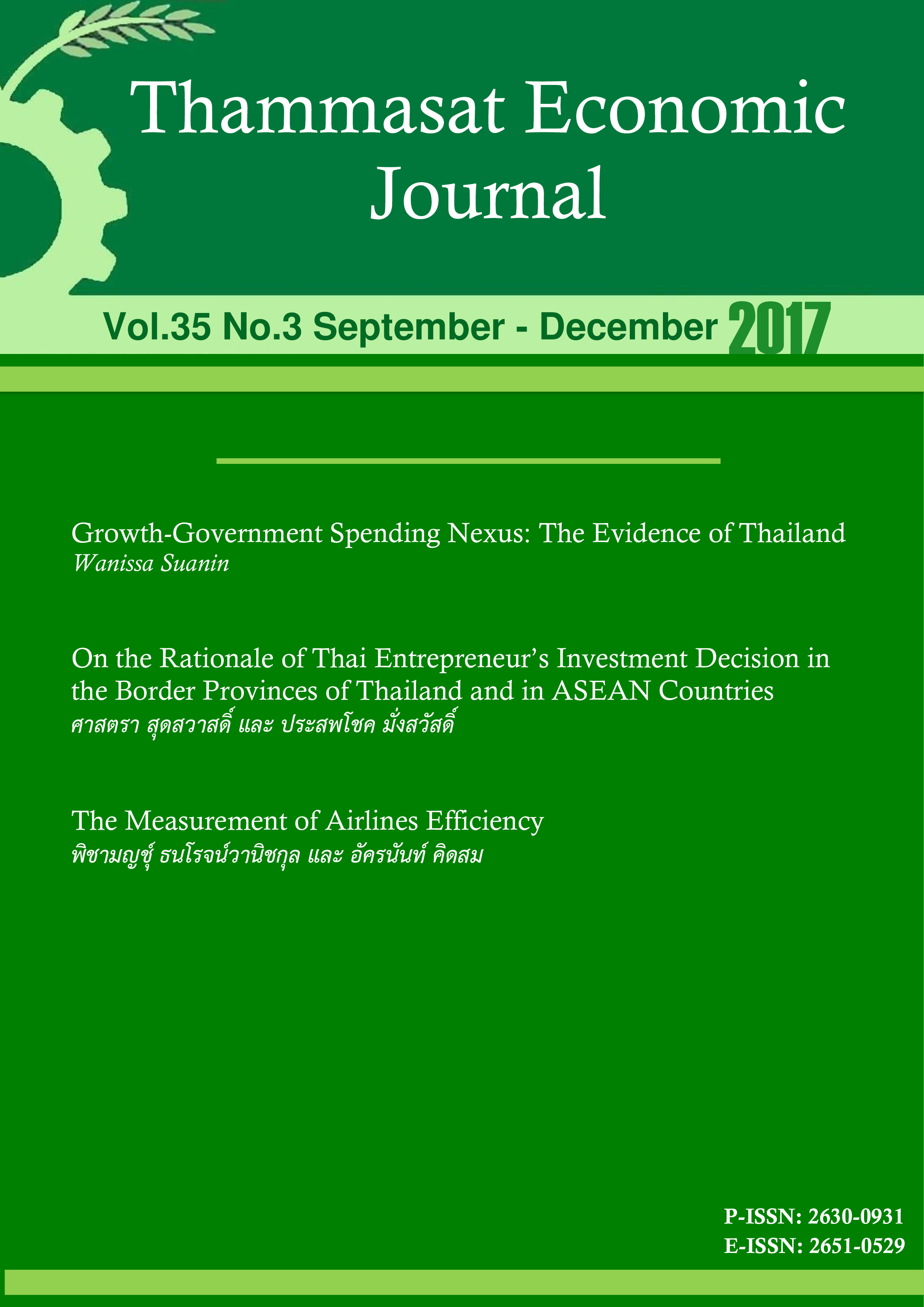On the Rationale of Thai Entrepreneur’s Investment Decision in the Border Provinces of Thailand and in ASEAN Countries
Keywords:
Investment, location, Multinational EnterpriseAbstract
Based on an Eclectic Paradigm or OLI Framework, this study analyzes the rationale behind investment in Thai border provinces and fellow ASEAN countries undertaken by Thai entrepreneurs. In-depth interviews and surveys comprise the main methodology employed in this study. It is surprising to find that entrepreneurs who expand their businesses into border areas do not have significant “ownership advantage.” They tend to represent “Original Equipment Manufacturers”, that is operations producing unskilled-labor-intensive goods, using no advanced technology and facing relatively low market shares. The main reason behind such firms expanding their businesses to border provinces lies in either a “Market Seeking” strategy or “Horizontal” investment. The characteristics and investment rationale are totally different from entrepreneurs investing in ASEAN countries. This group tends to comprise “Original Brand Manufacturers”, or OBMs, which seek new markets in ASEAN countries not only for market expansion reasons, but also for the purpose of seeking opportunities to assimilate new technology.
References
Caves, R.E. (1982). Multinational Enterprise and Economic Analysis. Cambridge: Cambridge University Press.
Dunning, J.H. (1977). Trade, location of economics activity and the multinational enterprise: A search for an eclectic approach, eds by Bertil, O., Hesselborn P-O., and Wijkman, P. M. in The international allocation of economic activity: Proceedings of a nobel symposium held at Stockholm, 269-296. London: Macmillan.
Dunning, J. (1980). Toward an eclectic theory of international production: Some empirical tests. Journal of International Business Studies, 11(1), 9-31.
Dunning, J. (1981). International production and the multinational enterprise. London: Allen & Urwin.
Dunning, J. (1988). Explaining international production. London: Allen & Urwin.
Dunning, J. (1996). Re-evaluating the benefits of FDI. In Companies without borders – transnational corporations in 1990s. London: International Thomas Press.
Dunning, J. (2001). The eclectic (OLI) paradigm of international production: past, present and future. International Journal of the Economics of Business, 8(2), 173-190.
Dunning, J., & Lundan, S. (2008). Institutions and the oli paradigm of the multinational enterprise. Asia Pacific Journal of Management, 25(4), 573-593.
Helpman, E. (1984). A simple theory of trade with multinational corporations, Journal of Political Economy, 92(3), 451-471.
Helpman, E., & Krugman P. (1985). Market structure and international trade. Cambridge: MIT Press.
Horstmann, I., & Markusen, J. (1987). Strategic investment and the development of multinationals. International Economic Review, 28(1), 109-121.
Markusen, J. (1984). Multinationals, multi-plant economies, and the gains from trade. Journal of International Economics, 16(3-4), 205-266.
Markusen, J., & Maskas, K. (2001). General equilibrium approach to the multinational Firm. NBER Working Paper No.8334, National Bureau of Economic Research.










